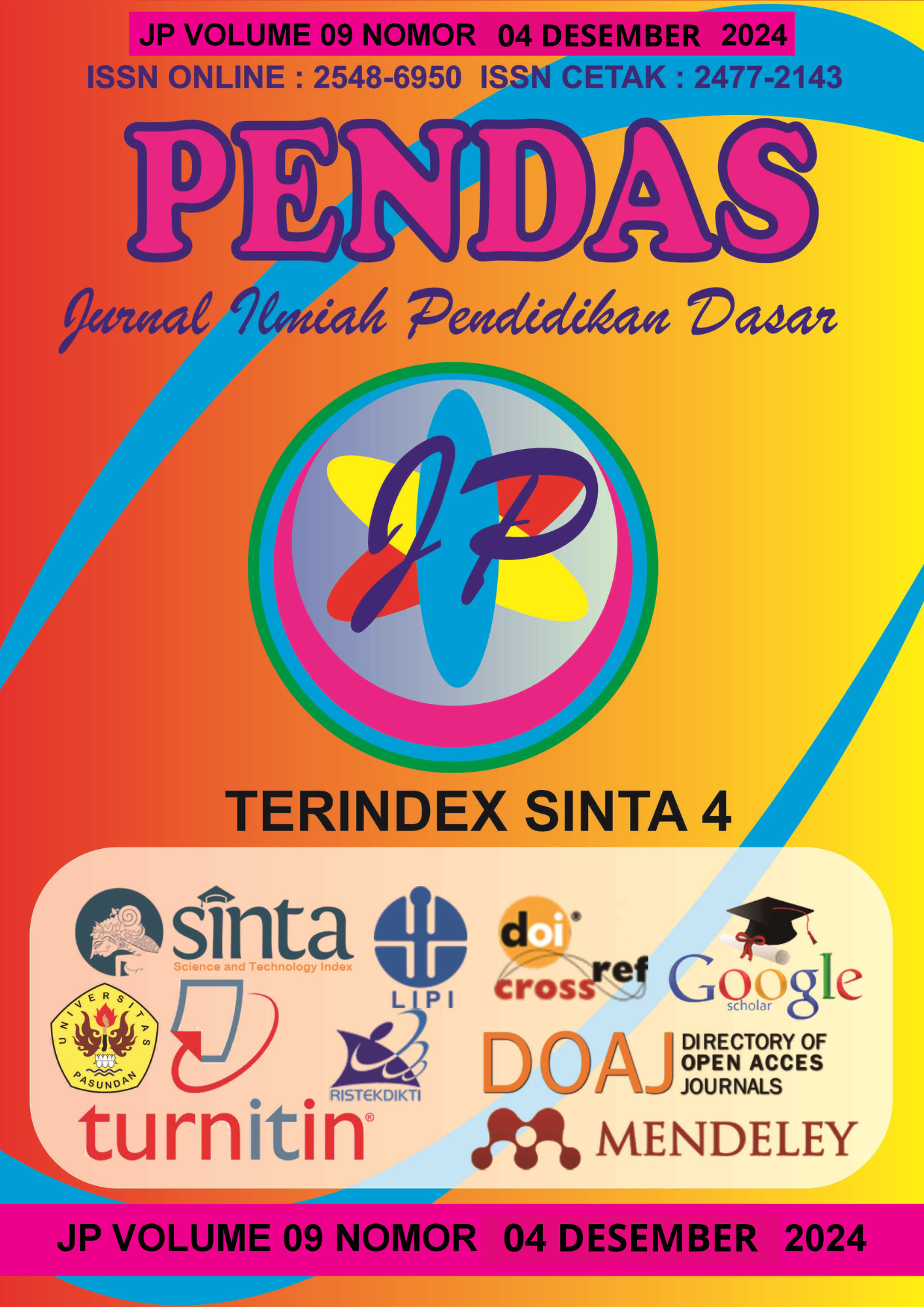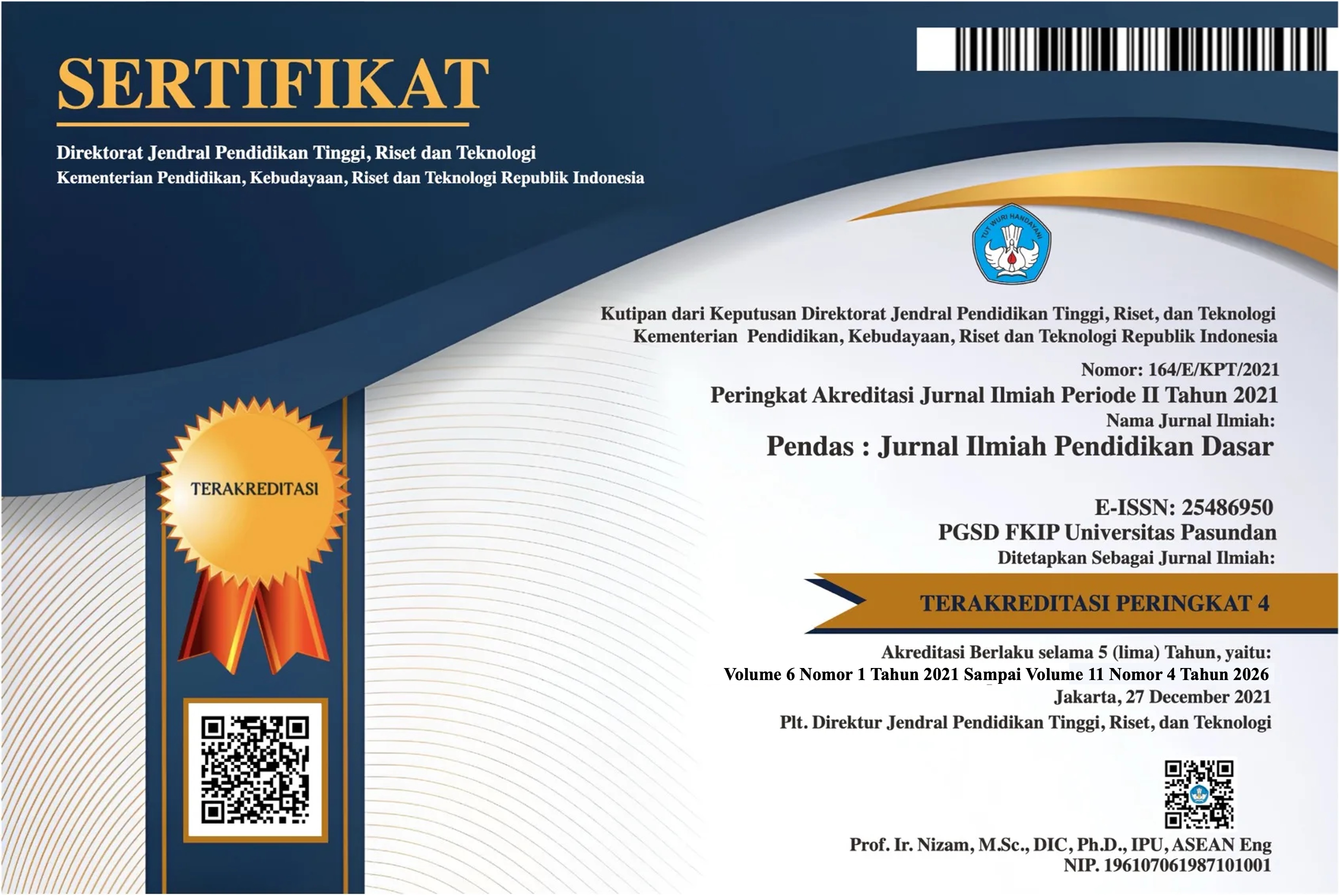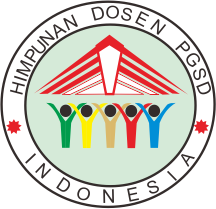ANALISIS STRUKTUR DAN NILAI-NILAI PENDIDIKAN CERITA RAKYAT “LEBUNG PENDAM”
DOI:
https://doi.org/10.23969/jp.v9i04.20306Keywords:
folktale, lebung pendam, intrinsic elements, educational valuesAbstract
Culture manifests in various forms, including folktale. This study aims to describe the content, structure, and educational values of the Batanghari folktale titled “Lebung Pendam.” The methodology employed is descriptive qualitative, utilizing historical methods and an objective approach. Data collection was conducted through interviews, literature studies, and document analysis. The findings of this study are: 1) an analysis of the content of “Lebung Pendam,” 2) the structure of “Lebung Pendam,” and 3) the educational values contained within the story. The study results indicate that “Lebung Pendam” belongs to the legend category, narrating the origin of the village of Lopak Aur. There are two versions of the story, differing in the main character's name, the cause of the conflict, and the identity of the character who survives at the end. The intrinsic elements of the story include a linear plot with the theme of social conflict, a rural setting, complex characters, and a moral message emphasizing the importance of thinking before acting and controlling emotions. The educational values identified in the story include morality, social, and religious values.
Downloads
References
Andréfouët, S., Paul, M., & Farhan, A. R. (2022). Indonesia’s 13558 islands: A new census from space and a first step towards a One Map for Small Islands Policy. Marine Policy, 135, 104848. https://doi.org/10.1016/J.MARPOL.2021.104848
Awalludin, A., Sanjaya, M. D., & Sevriyani, N. (2020). KEMAMPUAN DAN KESULITAN SISWA KELAS VIII MENGIDENTIFIKASI UNSUR INTRINSIK TEKS DRAMA. Jurnal Bindo Sastra, 4(1), 38–47. https://doi.org/10.32502/JBS.V4I1.2284
Hartina, M. (2023). Cerita Rakyat Batanghari: Legenda Penamaan Desa. Cirebon: KMO Indonesia.
Karim, A. A., Mujtaba, S., & Hartati, D. (2023). PENYUSUNAN BAHAN AJAR BERBASIS CERITA RAKYAT KARAWANG SEBAGAI UPAYA PEMBENTUKAN KARAKTER SISWA DI SMP AL MUHAJIRIN TEGALWARU. Jurnal Wahana Pendidikan, 10(1), 47–58. https://doi.org/10.25157/JWP.V10I1.8770
Madeamin, S. (2021). Analisis Cerita Rakyat Toraja Massudilalong Sola Lebonna Melalui Pendekatan Struktural. Jurnal Onoma: Pendidikan, Bahasa, dan Sastra, 7(2), 772–788. https://doi.org/10.30605/ONOMA.V7I2.1483
Pemerintah Republik Indonesia. Undang-Undang Republik Indonesia Nomor 5 Tahun 2017 tentang Pemajuan Kebudayaan. , Pub. L. No. 5, KEMENTERIAN SEKRETARIAT NEGARA REPUBLIK INDONESIA (2017). Indonesia: LL SETNEG : 31 HLM.
Pimpuang, K., & Yuttapongtada, M. (2023). Language Reflecting Society and Culture in the Provincial Folktale Literature of Northeastern Thailand and Its Value: With Special Reference to Ekarattana Udomporn’s Written Work. Journal of Language Teaching and Research, 14(1), 121–129. https://doi.org/10.17507/JLTR.1401.13
Romadhan, S., & Suttrisno. (2021). Pengembangan Bahan Ajar Budaya Literasi Melalui Cerita Rakyat dalam Membentuk Sikap Nasionalisme Siswa Sekolah Dasar. Jurnal Riset Madrasah Ibtidaiyah, 1(1), 81–88. https://doi.org/10.32665/JURMIA.V1I1.206
Ruslan, H. (2023). Unsur Intrinsik dan Ekstrinsik Cerita Rakyat Vova Saggayu di Kabupaten Pasangkayu. DEIKTIS: Jurnal Pendidikan Bahasa dan Sastra, 3(2), 73–90. https://doi.org/10.53769/DEIKTIS.V3I2.449
Sugihartono, C. D. J. (2024). PENGEMBANGAN HALAMAN INFORMASI CERITA RAKYAT UNTUK PENGUATAN LITERASI KEARIFAN LOKAL PADA KELAS IX C SMPN 1 TEMPUREJO JEMBER. Serunai : Jurnal Ilmiah Ilmu Pendidikan, 10(1). https://doi.org/10.37755/SJIP.V10I1.1302
Downloads
Published
Issue
Section
License
Copyright (c) 2024 Pendas : Jurnal Ilmiah Pendidikan Dasar

This work is licensed under a Creative Commons Attribution 4.0 International License.



















